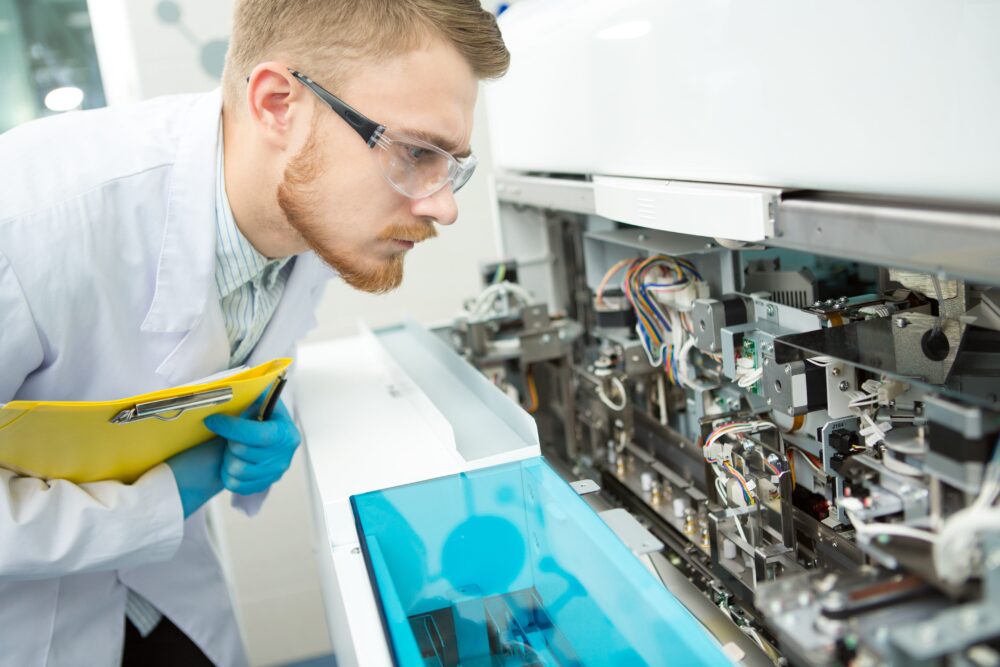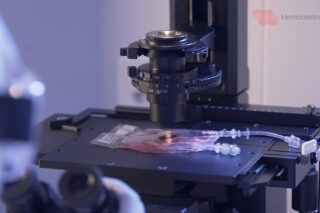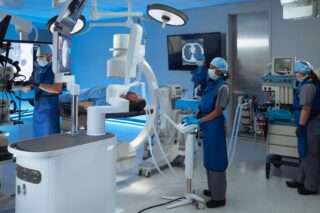Interview with Jinesh Patel, CEO and Co-Founder of UptimeHealth
As the healthcare industry races toward digitization, a quieter but equally critical transformation is underway: the modernization of medical equipment tracking and maintenance. Internet of Things (IoT) technologies are enabling clinics and hospitals to locate, monitor, and diagnose equipment issues in real time—eliminating guesswork, reducing failure rates, and improving patient outcomes. At the forefront of this movement is Jinesh Patel, CEO and Co-Founder of UptimeHealth, who advocates for IoT as a core component of efficient, compliant, and financially sound healthcare delivery.
But Patel is also sounding an alarm. While IoT systems are helping extend the life and reliability of medical devices, the people who service them are aging out of the workforce at an alarming rate. With a national shortage of trained biomedical technicians, the risk of widespread maintenance delays and operational failures looms large. To combat this, Patel’s team is not only deploying technology but also building solutions on the ground—including launching the first accredited dental equipment repair technician school in the United States. The future of digital healthcare, it seems, will depend as much on human expertise as it does on innovation.
Implementation and Benefits of IoT Tracking of Medical Equipment
As digital health infrastructure matures, more outpatient clinics and health systems are realizing the value of integrating IoT-based tracking systems into their equipment management strategies. From improved CMS audit readiness to sharper operational efficiency, the benefits are becoming difficult to ignore.
“IoT tracking takes the guesswork out of equipment management,” said Jinesh Patel, CEO and Co-Founder of UptimeHealth, a company providing medical equipment software and technician dispatching solutions. “Being able to locate things is important from a compliance standpoint and a regulatory audit standpoint because you need to be able to make sure you can do the planned and preventative maintenance on these machines.”
Medical devices are notoriously mobile, shifting from floors to departments, sometimes even hidden away by staff. Traditional paper logs and static inventory spreadsheets often can’t keep up. IoT-enabled equipment, on the other hand, communicates its location and status in real time, helping administrators track, monitor, and manage assets across facilities.
But Patel warns that not all environments offer seamless connectivity, which is why a hybrid approach—combining IoT, RFID, and smart sensors—is necessary.
“You can’t only rely on it,” he explained. “But if you have enough mitigating processes, you can create a full suite solution. IoT becomes complementary—almost a reinforcement layer.”

Predictive Maintenance and Reducing Equipment Failure
One of the most powerful advantages of IoT lies not in tracking, but in what it enables: predictive maintenance. Equipment failures are a constant threat to continuity of care, revenue, and safety. With intelligent monitoring, those failures can be anticipated—and often prevented.
“IoT-enabled platforms allow us to get ahead of problems before they become problems,” Patel said. “Now we went from something that would have future downtime to something that had zero downtime, because we got ahead of the problem.”
By collecting and analyzing sensor data—voltage spikes, unusual temperature increases, or performance drops—IoT platforms can alert technicians to act before failure occurs. This shift from reactive to proactive service reduces disruptions and dramatically improves equipment lifespan.
Patel described the traditional service workflow as a burden:
“You’d call your technician and say, ‘Hey, something’s broken.’ Then they would come out, see what the error code is, go back to their office for the part, and return to fix it—adding hours or even days of downtime.”
With integrated data and remote diagnostics, technicians arrive with the right parts the first time, saving time and cost while minimizing impact on patient care.
In a world of stretched budgets and rising demands, predictive maintenance is not just an innovation—it’s a necessity.
Equipment Management of Outpatient Healthcare Facilities
As healthcare increasingly shifts to outpatient settings—urgent care centers, dental clinics, ambulatory surgical centers—the responsibility for equipment maintenance also shifts, often to personnel with little to no technical training.
“These smaller locations don’t have departments or technicians on site like a big hospital does,” Patel explained. “They’re built to run very lean. If something breaks, it’s literally the only thing they might have.”
Outpatient providers are not just clinically focused—they’re also often business owners managing operations, compliance, and patient care. Many don’t have the time or training to handle preventive equipment maintenance.
“It’s like driving a car without knowing how to maintain one,” said Patel. “They’re good operators, but they may not realize that the filter needs to be changed, or that maintenance is overdue.”
UptimeHealth’s software offers these clinics tools to track equipment status, dispatch service providers, and implement maintenance cycles. It’s particularly useful in fast-growing sectors like dental care, where many practices rely on just one sterilizer or x-ray machine.
The company has also built a technician marketplace, giving clinics access to independent or retired professionals who may be available sooner than traditional vendors.
“I’m trying to expose a network of independents that might come out to you quickly,” Patel said. “So now I can get your stuff up and running faster.”
Raising Awareness: Medical Technician Profession Needs a Boost
While technology is rapidly advancing, a critical shortage of qualified professionals to maintain that technology is looming. The average age of a biomedical technician in the U.S. is 55, with few younger workers entering the field.
“It’s an invisible workforce that doesn’t get a lot of recognition,” Patel emphasized. “The alarm bells should have been sounded 10 years ago.”
The shortage hits outpatient clinics the hardest. When equipment fails, and no technician is available, entire operations can stall. That affects not just revenue, but patient care, provider morale, and community trust.

To address this, UptimeHealth is taking direct action.
“We worked with the College of Biomedical Equipment and Technology out of San Antonio, Texas to build the very first accredited dental equipment repair technician school in the United States,” Patel said.
Opened in 2025, it’s the first step in reversing a dangerous trend.
“Dentistry has been around for a long time. The fact that this is the first school for dental repair techs is kind of crazy.”
The program offers a two-year associate’s degree with a strong return on investment: many students will pay off their education within months thanks to high job demand. UptimeHealth is also working with local governments and trade associations to promote technician careers to mechanically inclined youth who may not have considered healthcare as a viable, rewarding path.
“When you’re fixing that product,” Patel said, “you’re helping someone receive life-saving treatment. That’s a different kind of reward.”
IoT tracking and predictive maintenance are no longer futuristic ideas—they’re essential strategies for modern healthcare operations. But as digital tools expand, the human infrastructure to support them is struggling to keep pace. Patel and his team are sounding the alarm—and offering real solutions—before a crisis of broken equipment and missing technicians becomes reality.
As Patel succinctly put it:
“People just need to recognize that it’s an industry that needs help, but also that you’re helping people get healthcare at the end of the day.”











